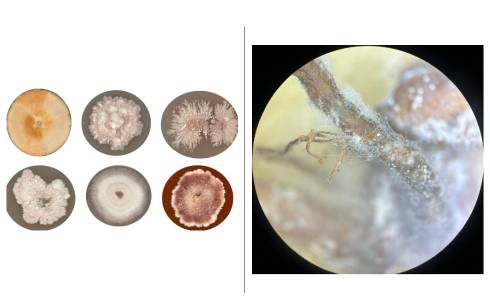Fall 2025 Plant Pathology Seminar Irene Casallas Blanco presents
September 29, 2025 1:30PM - 2:30PM

Insights into the diversity of the bean root rot complex
Irene Blanco Casallas
Department of Plant Soil and Microbial Sciences Michigan State University
The bean root rot complex comprises fungal pathogens belonging to clade 2 of the Fusarium solani species complex (FSSC), which contains up to 60 phylogenetically distinct species, most of which are cryptic. In recent years, three of the four causal species of bean root rot have been identified in Michigan, two of which were thought to be endemic to South America. There are significant gaps in the understanding of diversity within the FSSC. Novel species have been recently identified in South America, and with ongoing climate change, the distribution of these species could be more widespread than expected. The main objective of this study was to better understand the taxonomic diversity of FSSC present in dry bean hosts and farm soils in Michigan. Isolates from recent collections were identified using multilocus sequence typing, including loci sequences from translation elongation factor 1-α (TEF1), and RNA polymerase II second largest subunit (RPB2). In parallel, using TEF1 and RPB2, a meta-barcoding approach was performed with soil samples to identify the FSSC species present. The analysis showed that the extent of Fusarium species causing bean root rot is greater than expected since it is not monitored extensively. In parallel, a genomic approach was applied to analyze the genome composition of key FSSC isolates selected from the phylogeny. This analysis will focus on identifying key effectors and virulence factors that contribute to host infection, as well as exploring the evolution of pathogenicity within the FSSC. Together, these insights enhance our understanding of the taxonomic and genomic complexity of the bean root rot complex and support the development of targeted disease management practices.



 Print
Print Email
Email